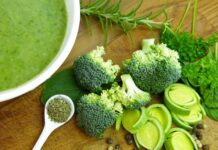Here in the US, coffee is the beverage of choice for most people. After water, it’s the most consumed beverage.
But worldwide, tea is far more popular than coffee. Like soccer, tea has struggled to garner much appreciation in the US, despite its global popularity.
Are you looking to expand your personal pallet, and drink something other than highly caffeinated coffee or soda? Then tea is the most logical option.
Oolong tea in particular is full of nutrients and can provide numerous mental and physical health benefits. But what does oolong tea taste like?
Many teas require a bit of a warm-up period. Some, like pooling, do have an acquired taste. But once you learn to appreciate the oolong tea taste, you’ll never go a day without.
Keep reading to learn all about oolong and how this tea taste compares to other popular options.
The Tea Oxidation Process
There are different types of loose leaf teas available on the market. And the difference is somewhat similar to coffee.
Coffee preferences depend largely on the roasting style. Some people prefer a lighter roast, which allows you to state more of the coffee’s natural flavor characteristics. Others prefer a dark roast, which masks the natural flavor of the coffee with the flavor of the roast itself.
Loose leaf tea is processed after picking. This process is called oxidation. Oxidation is the exposure to oxygen for various periods of time to age the leaves and deepened the flavors.
Green tea is made from leaves that aren’t oxidized. Black tea is made from leaves that are first crushed so that the leaves can become fully oxidized.
Oolong tea is somewhere in the middle. The leaves are placed in the sun to dry out. They are bruised, but not crushed, to experience a medium degree of oxidation.
This partial oxidation creates a tea that isn’t nearly as popular as green tea or black tea but offers unique flavor notes that are much more complex and appreciated by serious tea lovers.
Producing oolong tea is very different than other types of tea. Tea producers consider oolong to be the holy grail of the tea world.
What Is Oolong Tea?
Oolong tea is the traditional tea consumed in China. The leaves are produced from the same plants that produce green and black tea. The difference is the oxidation process.
It contains a fair amount of caffeine. Caffeine is higher than green tea but lower than black tea and much lower than coffee.
It has enough caffeine that it could become your morning beverage of choice, replacing your dependency on coffee. But it doesn’t have so much, that you can still enjoy it in the afternoon or evening.
Along with caffeine, oolong tea contains antioxidants magnesium, potassium, and calcium.
Oolong tea hasn’t been studied as extensively as green tea or black tea, but current studies suggest that oolong tea might help fight diabetes.
What Does Oolong Tea Taste Like?
So here’s the big question. What does oolong tea actually taste like?
It’s not as vibrant and refreshing as green tea. It’s very floral, with a hint of fruit notes in it. Some people say that it tastes a bit grassy.
The final taste of oolong tea will depend on multiple factors. Where the tea was grown will affect how it tastes. The terroir, including the elevation, weather, and soil type will affect the taste of oolong.
So depending on what type of oolong you are drinking, you might get a creamy, milky flavor, nutty flavors like almond, bright fruity flavors, or a sweet honey taste.
In general, oolong tea is denoted by its heavy floral taste. It’s intended to be a slow sipping beverage, not a fast gulp down like green tea.
What Is Milk Oolong Tea?
Contrary to popular belief, milk oolong tea isn’t made with milk or cream. In fact, it’s just looseleaf tea by itself.
The term milk oolong tea often refers to tea produced in Taiwan at high elevations. And what does oolong milk tea taste like? Oolong milk tea taste is defined by the creamy, milk-like flavor and mouthfeel.
It’s a rich-tasting tea. Of course, you’re free to add milk to any of your teas. But with a high-quality oolong tea, it’s definitely not necessary.
Oolong Tea Alternatives
Not everyone loves oolong tea. The flavor is complex and floral and can be difficult for new tea drinkers to acquire a taste for.
That’s why most new tea drinkers start with green tea. It’s bright and refreshing and is much easier to drink in the beginning. Iced green tea is a popular summer drink here in the US, though it’s usually full of sugar to make it go down a bit easier.
This is a great way to introduce people to drinking tea. But after a while, it’s time to drink green tea on its own.
Likewise, black tea is also very popular. You can drink it by itself or add milk and sweetener to it. Like all other teas, black tea comes loaded with health benefits. Click here to learn more about how black tea can support your mind and body.
Due to its higher caffeine content, black tea is a popular morning beverage. For those looking to replace their dependence on coffee, which has too much caffeine for many people, black tea is a great option.
On the other end of the spectrum is herbal tea. It’s technically not tea, since it doesn’t come from tea plants. Instead, herbal tea comes from flowers or leave of other types of plants.
They don’t contain any caffeine at all, so they make a great before-bed beverage to help you relax. Chamomile, hibiscus, and peppermint are popular herbal tea options.
Drink More Tea
So what does oolong tea taste like? It’s floral, a little bit fruity, and often creamy or milky. The flavor is complex, making it a favorite among avid tea drinkers.
Looking for more diet tips and tricks? Be sure to check out our blog to find other helpful articles.















